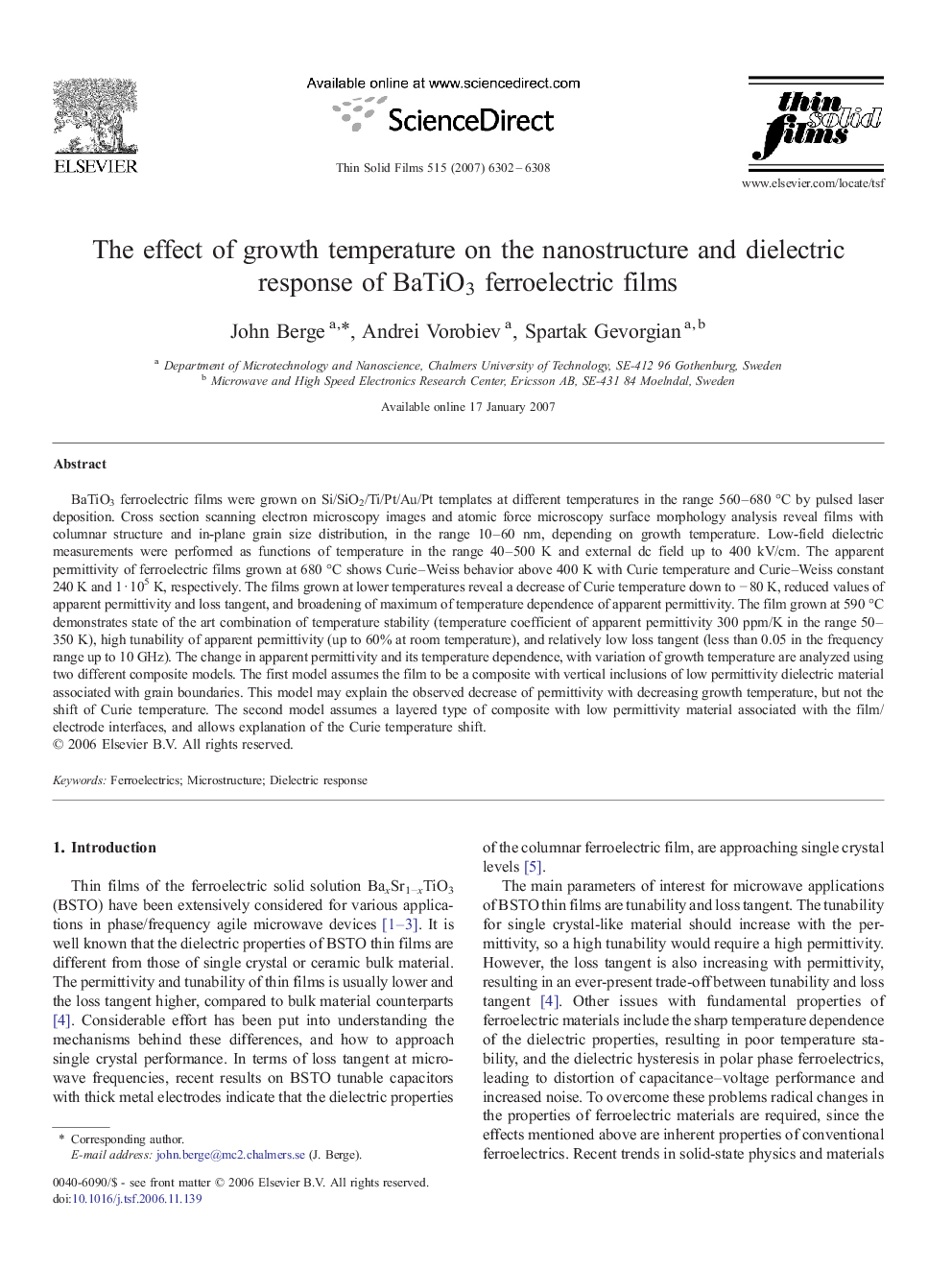| کد مقاله | کد نشریه | سال انتشار | مقاله انگلیسی | نسخه تمام متن |
|---|---|---|---|---|
| 1675497 | 1008980 | 2007 | 7 صفحه PDF | دانلود رایگان |

BaTiO3 ferroelectric films were grown on Si/SiO2/Ti/Pt/Au/Pt templates at different temperatures in the range 560–680 °C by pulsed laser deposition. Cross section scanning electron microscopy images and atomic force microscopy surface morphology analysis reveal films with columnar structure and in-plane grain size distribution, in the range 10–60 nm, depending on growth temperature. Low-field dielectric measurements were performed as functions of temperature in the range 40–500 K and external dc field up to 400 kV/cm. The apparent permittivity of ferroelectric films grown at 680 °C shows Curie–Weiss behavior above 400 K with Curie temperature and Curie–Weiss constant 240 K and 1 · 105 K, respectively. The films grown at lower temperatures reveal a decrease of Curie temperature down to − 80 K, reduced values of apparent permittivity and loss tangent, and broadening of maximum of temperature dependence of apparent permittivity. The film grown at 590 °C demonstrates state of the art combination of temperature stability (temperature coefficient of apparent permittivity 300 ppm/K in the range 50–350 K), high tunability of apparent permittivity (up to 60% at room temperature), and relatively low loss tangent (less than 0.05 in the frequency range up to 10 GHz). The change in apparent permittivity and its temperature dependence, with variation of growth temperature are analyzed using two different composite models. The first model assumes the film to be a composite with vertical inclusions of low permittivity dielectric material associated with grain boundaries. This model may explain the observed decrease of permittivity with decreasing growth temperature, but not the shift of Curie temperature. The second model assumes a layered type of composite with low permittivity material associated with the film/electrode interfaces, and allows explanation of the Curie temperature shift.
Journal: Thin Solid Films - Volume 515, Issue 16, 4 June 2007, Pages 6302–6308